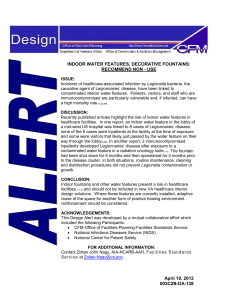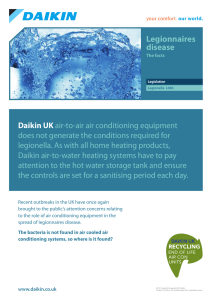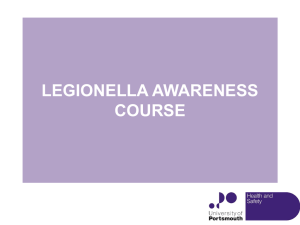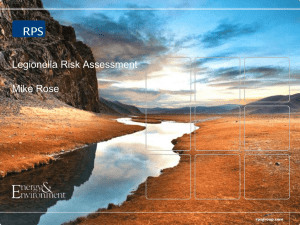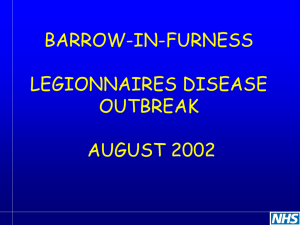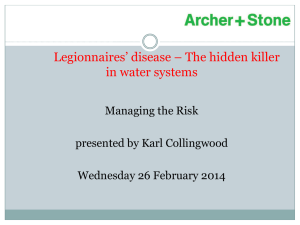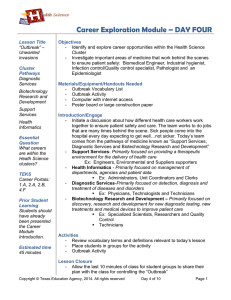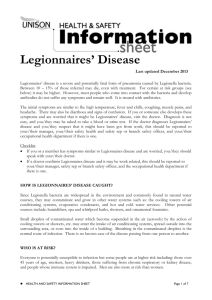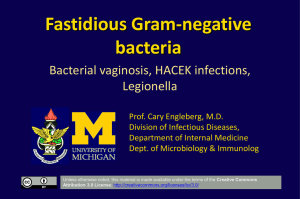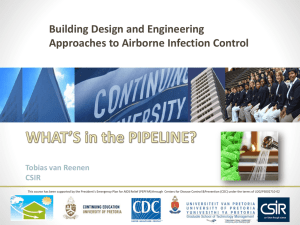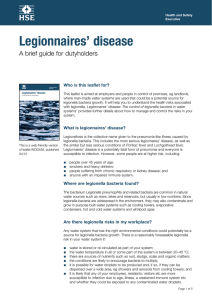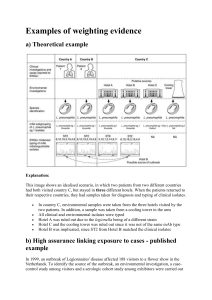Infectiousness of aerosolised organisms
advertisement
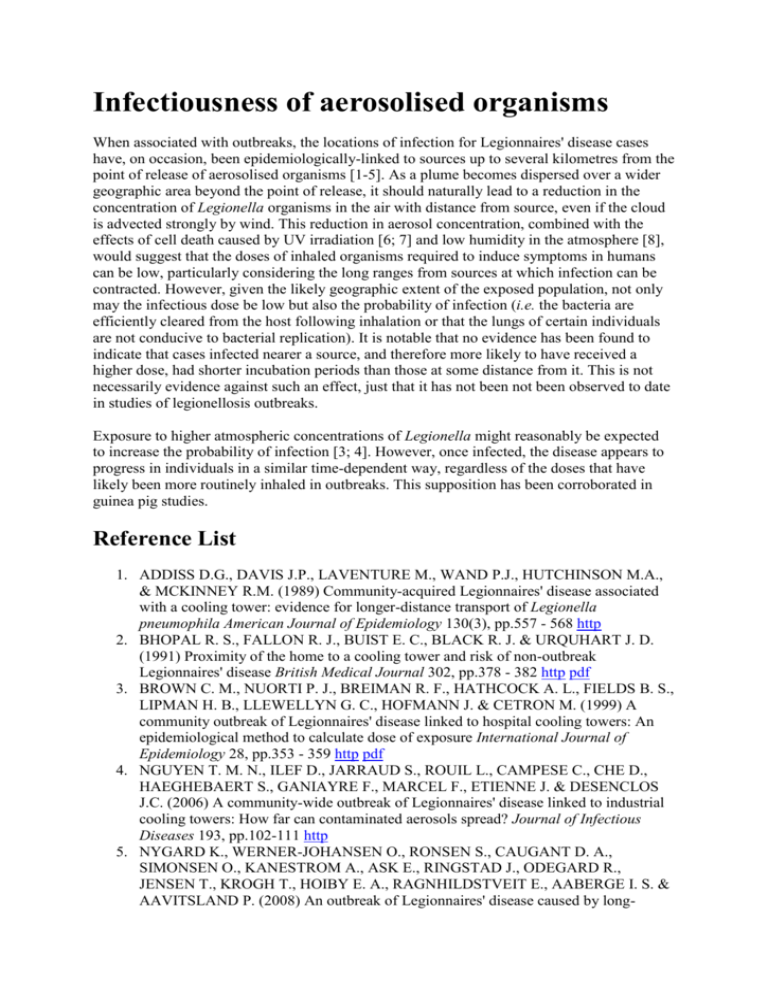
Infectiousness of aerosolised organisms When associated with outbreaks, the locations of infection for Legionnaires' disease cases have, on occasion, been epidemiologically-linked to sources up to several kilometres from the point of release of aerosolised organisms [1-5]. As a plume becomes dispersed over a wider geographic area beyond the point of release, it should naturally lead to a reduction in the concentration of Legionella organisms in the air with distance from source, even if the cloud is advected strongly by wind. This reduction in aerosol concentration, combined with the effects of cell death caused by UV irradiation [6; 7] and low humidity in the atmosphere [8], would suggest that the doses of inhaled organisms required to induce symptoms in humans can be low, particularly considering the long ranges from sources at which infection can be contracted. However, given the likely geographic extent of the exposed population, not only may the infectious dose be low but also the probability of infection (i.e. the bacteria are efficiently cleared from the host following inhalation or that the lungs of certain individuals are not conducive to bacterial replication). It is notable that no evidence has been found to indicate that cases infected nearer a source, and therefore more likely to have received a higher dose, had shorter incubation periods than those at some distance from it. This is not necessarily evidence against such an effect, just that it has not been not been observed to date in studies of legionellosis outbreaks. Exposure to higher atmospheric concentrations of Legionella might reasonably be expected to increase the probability of infection [3; 4]. However, once infected, the disease appears to progress in individuals in a similar time-dependent way, regardless of the doses that have likely been more routinely inhaled in outbreaks. This supposition has been corroborated in guinea pig studies. Reference List 1. ADDISS D.G., DAVIS J.P., LAVENTURE M., WAND P.J., HUTCHINSON M.A., & MCKINNEY R.M. (1989) Community-acquired Legionnaires' disease associated with a cooling tower: evidence for longer-distance transport of Legionella pneumophila American Journal of Epidemiology 130(3), pp.557 - 568 http 2. BHOPAL R. S., FALLON R. J., BUIST E. C., BLACK R. J. & URQUHART J. D. (1991) Proximity of the home to a cooling tower and risk of non-outbreak Legionnaires' disease British Medical Journal 302, pp.378 - 382 http pdf 3. BROWN C. M., NUORTI P. J., BREIMAN R. F., HATHCOCK A. L., FIELDS B. S., LIPMAN H. B., LLEWELLYN G. C., HOFMANN J. & CETRON M. (1999) A community outbreak of Legionnaires' disease linked to hospital cooling towers: An epidemiological method to calculate dose of exposure International Journal of Epidemiology 28, pp.353 - 359 http pdf 4. NGUYEN T. M. N., ILEF D., JARRAUD S., ROUIL L., CAMPESE C., CHE D., HAEGHEBAERT S., GANIAYRE F., MARCEL F., ETIENNE J. & DESENCLOS J.C. (2006) A community-wide outbreak of Legionnaires' disease linked to industrial cooling towers: How far can contaminated aerosols spread? Journal of Infectious Diseases 193, pp.102-111 http 5. NYGARD K., WERNER-JOHANSEN O., RONSEN S., CAUGANT D. A., SIMONSEN O., KANESTROM A., ASK E., RINGSTAD J., ODEGARD R., JENSEN T., KROGH T., HOIBY E. A., RAGNHILDSTVEIT E., AABERGE I. S. & AAVITSLAND P. (2008) An outbreak of Legionnaires' disease caused by long- distance spread from an industrial air scrubber in Sarpsborg, Norway Clinical Infectious Diseases 46(1), pp.61-69 http 6. ANTOPOL S. C. & ELLNER P. D. (1979) Susceptibility of Legionella pneumophila to ultraviolet radiation Applied and Environmental Microbiology 38, pp.347 - 348 http pdf 7. GILPIN R. W., DILLON S. B., KEYSER P., ANDROKITES A., BERUBE M., CARPENDALE N., SKORINA J., HURLEY J. & KAPLAN A. M. (1985) Disinfection of circulating water systems by ultraviolet light and halogenation Water research 19, 839 - 848 http 8. HAMBLETON P., BROSTER M. G., DENNIS P. J., HENSTRIDGE R., FITZGEORGE R. & CONLAN J. W. (1983) Survival of virulent Legionella pneumophila in aerosols Journal of Hygiene, Cambridge 90, pp.451 - 460 http
